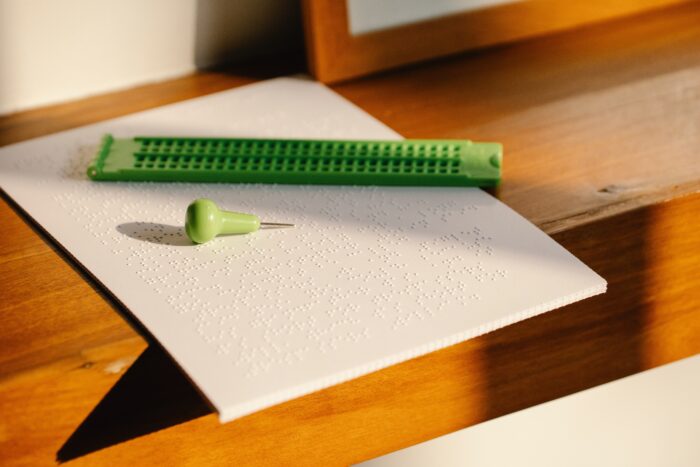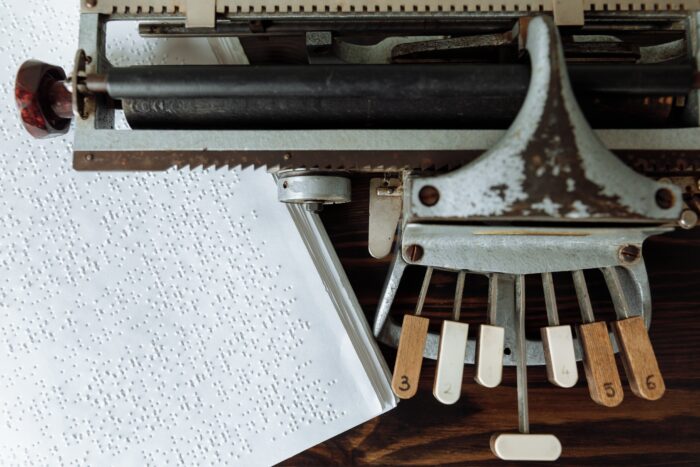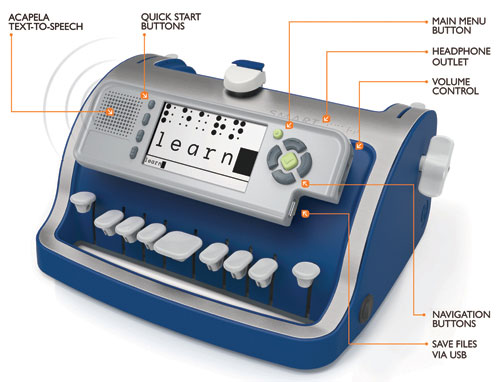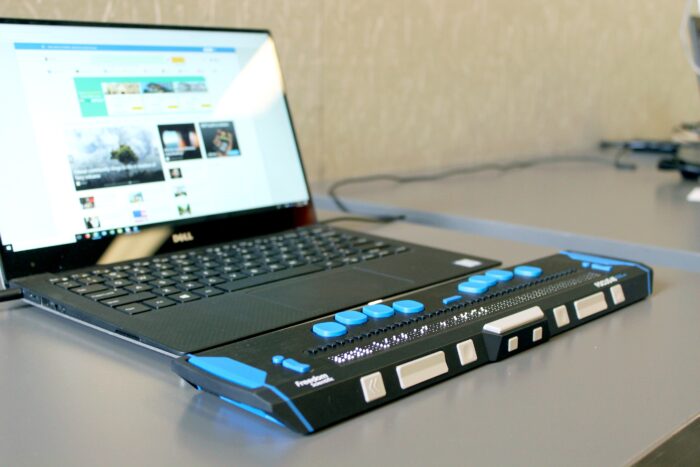
Today, learning is literally at our fingertips. All we need to do is tap on our screens to take piano lessons or revise Physics concepts. While learning on smart devices is a fairly recent practice, did you know that someone, in 19th century France also thought along the same lines? He had a purpose – making reading and writing accessible to the sightless with a single touch.
A teenager, Louis Braille, came up with his own tactile orthography. His innovation changed the lives of millions of people for years to come. It made sure that the sightless occupied the same spaces as the sighted, and had equal access to education. Not just that, they were able to read and write independently. Which meant that they could form and articulate their opinions, read for leisure, and sustain themselves through jobs.
On World Braille Day, read the story of Louis Braille, his innovation, and how it has stood the test of time.
Louis Braille was born on 04 January 1809, in Coupvray, a picturesque town 43 kilometres east of Paris’s famous Notre Dame Cathedral. At three years, Braille suffered an eye injury while he was playing with an awl – a small pointed tool used to pierce holes in leather – in his father’s workshop. This injury caused an infection in both the eyes, rendering Braille completely blind by the time he was five years old.

Louis Braille injured his eye while playing with an awl, years later he would use a similar device – a stylus to write the braille code on paper. (Image from Pixabay)
This accident didn’t stop Braille from pursuing an education. He was a gifted student and this helped him earn a scholarship, at 10, to attend the National Institute for Blind Children in Paris – established by Valentine Haüy in the 18th century with just 12 pupils. Haüy had also developed books for blind students with thick pages and embossed letters.
It is said that Louis Braille laboriously read all the 14 books in the institute’s library. That’s when he discovered that it took a while to feel and recognise each letter. And, one would forget the beginning of a sentence by the time one reached the end. This inspired Braille to think of another method that would simplify the reading process for the visually impaired.
Around the same time, Braille was introduced to écriture nocturne — a method put forth by the retired soldier Charles Barbier de la Serre to help people with hearing and visual disabilities read. Some also say that this method, night writing, was designed to help Napoleon’s soldiers communicate at night.
Night writing was a code comprising a set of 12 dots, which were used to transcribe various phonetic sounds. Navigating this new code was less tedious in comparison to the large embossed books in the institute’s library. However, Braille felt that the code could be shortened because it still took some time to glide through the alphabet. It was still not possible to recognise the letters with a single touch.
So, Louis Braille decided to modify night writing to a system of six dots. This new code was used to identify the alphabet and not the phonetic sounds. Ensuring that the reader could feel the alphabet using a single fingertip at a time and also be able to write the same letter on paper with a help of a stylus and a grid.
By the age of 15, Braille had successfully created a better tactile system of reading and writing. In the year 1829, he published the first treatise on the system of braille. However, this innovation was slow to be adopted. In fact, braille as a system was only approved by the French government two years after Braille’s death. In 1932 the universal code for braille was adopted by the English-speaking nations.
At this point, you may have questions such as, what is braille exactly? And how do people read it? Braille is a code that helps the visually impaired read and write. The code is made up of cells. Each braille cell contains six dots arranged in two columns of three rows. Each of these dots has a number – between 1-6 – attached to it. In the top left corner of the cell is dot 1, moving down below is dot 2 in the middle row, and right below this is dot 3. And, dot 4 is the top right corner, followed by dot 5 in the middle row. Lastly, dot 6 is in the bottom right corner.

The English alphabet and numbers in braille.
One reads the script by running one’s finger over each dot which represents a letter of the alphabet, punctuation marks, etc. For instance, the alphabet ‘a’ is denoted with just dot 1 and ‘b’ is denoted with dot 1 and 2. With the help of this code, the reader is able to glide their fingertips through the text easily without having to reposition them multiple times.
Braille was revolutionary for its time because it enabled the sightless — subjected to ridicule or pushed to the margins — to read and write. The code has stood the test of time because of how simple it is. Additionally, it has been instrumental in helping the visually impaired become independent and gain access to the written word. It has helped institutions create inclusive spaces for all students.
With the advancements in technology, one may argue that braille is becoming obsolete. This is far from true because millions of people still rely on braille to read and write. Smartphones and assistive devices are helpful but they are not a replacement for literacy. As literacy helps us navigate public and private spaces. People still depend on the braille script in lifts, on tablets, etc. to read directions and names. Furthermore, braille is critical for individuals with both hearing and vision challenges.
There’s no doubt that braille will be used by millions of people in the years to come. It will most certainly be improved because of technological advances, but the central principle will always remain the same. Here’s a peek at how braille has evolved over the years.
Initially, braille was written with the help of a stylus and a slate. A stylus is a pointed tool, similar to an awl, that can be held between the fingers. The slate is a grid with hinges to hold the paper. Students wrote in the mirror image by punching dots with a stylus at the back of the paper. They then turned over the paper to read the text. This writing method is still used by many today.

A traditional braille stylus and grid. (Image from Pexels)
Over time, in 1892, the first braille typewriter was developed by Frank Haven Hall and Gustave Siebel in Illinois. Braille typewriters usually have six keys and a spacebar. These keys can be pushed in at the same time or separately. The various combinations of the keys produce different letters of the alphabet or symbols.

A braille typewriter usually has six keys and a spacebar. (Image from Pexels)
All the braille typewriters that followed the first one were loud and cumbersome as they would get jammed often. It was only in the mid 20th century did the famous Perkins Braille writer arrive. It was sturdy, quiet and easy to use. And, today, with the SMART Brailler, sightless students are able to learn early and holistically.

The Perkins SMART Brailer helps early learners read and write. (Image from Wikimedia Commons)
Furthermore, the innovation of refreshable braille displays has made it seamless for students to take notes and read. Here, an electro-mechanical device is connected to tablets and computers to generate a braille output. This also works as a writing tool where people can write in braille code and have their words appear on the screen as well.

Refreshable braille displays are electronic devices used to generate a braille version of the text on the screen. (Image from Unsplash.)
Suffice it to say that Louis Braille’s code has been adapted over the years to meet the needs of people with vision challenges. Technology has aided the process of innovation. And, behind every innovation, there has been a person with a purpose to make the world a better place and a little more inclusive. This is remarkable, isn’t it?
Does this tale of ingenuity inspire you? Would you like to read more such stories? If yes, tell us in the comments below. Please mention an innovator you would like to read about next?
Sara started her professional journey in a newsroom and quickly realised that words and stories are her happy place. You may have noticed that she adores her alliteration. She’s also an ailurophile who needs her fix of cute kitty reels to unwind. A warm cup of coffee, chocolates with hazelnut, and a Netflix binge on a cosy chair are all she needs in life. Trees and beaches make her very happy too.
Comments
Pranav Chaudhari
February 4, 2022
This is great
Divyansh
January 14, 2022
I loved this article. It was very interesting.
I wanted to know about the Morse Code, created by Samuel Morse and Alfred Vail
Iffa M.P
January 9, 2022
Informative story. Thanks Sara.
DJ
January 8, 2022
“LIFE IS NEVER FAIR BUT PERHAPS IT IS A GOOD THING FOR MOST OF US THAT IT IS NOT”
“THE ROLE OF THE WRITER IS NOT TO SAY H=WHAT WE ALL CAN SAY, BUT WHAT WE ARE UNABLE TO SEE.
LOTS OF LOVE FROM MR. ZGOD
Anu
January 8, 2022
Nice
Lalsa
January 8, 2022
Very good
Riya Kumari
January 6, 2022
Amazing and motivating story …. Thanks for this information …………
Mahathi Muthu
January 5, 2022
Amazing
M.JASVINTH
January 5, 2022
Such a brilliant study. Thanks a lot for the knowledge.
Anju Ann Mathew
January 5, 2022
I really love how the whole story beautifully unfolds in the blog. Such great storytelling!
Likhitha
January 5, 2022
Ya it’s great …. thanks for this information …..???
Sachin maurya
January 5, 2022
This is great
Avari ghosh
January 5, 2022
??
Niharika
January 5, 2022
Thanks for the information on Braille writing system. We didn’t know this much. ????
K.Banu Sree
January 5, 2022
Inspirational story ?
Afifa Khan
January 5, 2022
This is a great information and also motivating… Just loved it…??
Jeniliya
January 4, 2022
Good?
Amritanshu Mishra
January 4, 2022
Thîs story reminds of the quote- where there is a will there is a way. Thanks a lot Sara Fathima
Anjishnu
January 4, 2022
Awesome and very knowledgeable ???
Sanghita Roy
January 4, 2022
Really it’s a great innovation ??
Ankit
January 4, 2022
This story is inspirational ,
For ,those who have curiosity to know something or do unwilling things in his/her life.
#WORLD BRAILLE DAY
Ankit Behera
January 4, 2022
Thanks for the information ☺️
Dishani Manna
January 4, 2022
This is great.
Alex SD
January 4, 2022
Keep Learning
Jigyashu
January 4, 2022
This is crazy??
Noorain
January 4, 2022
Amazing..just loved it …Applauded Sara
Sourav
January 4, 2022
Good
Naveenapriya
January 4, 2022
??
Vandya Rai
January 5, 2022
This was such a lovely read, Sara. The inspiring story of Louis Braille is brought out with such beautiful storytelling. Looking forward to reading more of your work 🙂